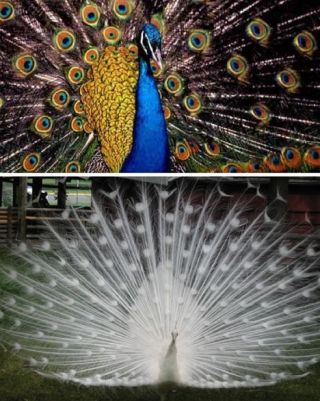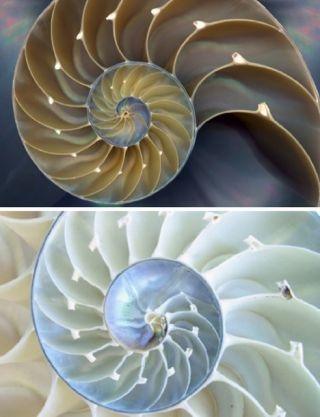
Neuroscience
The Brain Is NOT a Computer Stuck on Top of a Body
The major fallacy of neuroscience.
Posted March 22, 2014
There is a major fallacy in neuroscience about the brain that of all things has ascended to the status of belief—that the brain is a computer stuck on top of a body, that it is an experimental machine that anticipates, guesses, and self corrects. It is as if the brain is an experimental scientist that makes educated guesses, does its computations, and then tries again to figure out correct information. Computers operate via an incredibly fast system of computations based on 0’s and 1’s. This is a powerful way of information ordering which can create incredible order. But the brain does not operate this way. It isn’t a scientist or a computer. It’s a brain. It operates in an entirely different fashion.

There is a major fallacy in neuroscience about the brain that of all things has ascended to the status of belief—that the brain is a computer stuck on top of a body, that it is an experimental machine that anticipates, guesses, and self corrects. It is as if the brain is an experimental scientist that makes educated guesses, does its computations, and then tries again to figure out correct information. Computers operate via an incredibly fast system of computations based on 0’s and 1’s. This is a powerful way of information ordering which can create incredible order. But the brain does not operate this way. It isn’t a scientist or a computer. It’s a brain. It operates in an entirely different fashion.
Human beings are purely biological organisms. Just like all other organisms, we evolved to be what we are, as has our brain. As such our brain and its operations reflect the basic principles of nature. The principle at hand is the recreation of repeated form – fractals. As such, the brain is like all matter - subatomic, atomic, galaxies, and life forms. Fractals can be defined most simply as a detailed pattern repeating itself. They need not exhibit exactly the same structure, but the same "type" of structures must appear. They are easily seen in crystals, pineapples blood vessels, trees, cells, heartbeats, snow flakes, clouds, lightning bolts, the galaxy, and DNA. They exist in concrete form and abstract form, and in mathematical form.
Let me give a one minute history of the universe as fractals. Soon after the big bang things began to cool. The first form of matter appeared – Higgs-Bosons – tiny, tiny, fractals. They became neutrons and protons – fractals; and then formed into hydrogen atoms, and all the rest of the periodic table – fractals; then stable molecules, also fractals. Its important to recognize that the actual shape of molecules are a literal rendering of their composition. Their shapes are not random, but specific and inevitable. Even the double helix of DNA is a origami of built-in form from its component molecules. DNA is a fractal. Cells, the unit of living things are a fractal – one celled organisms, ameba’s, replicate its repeated pattern; yeast cells repeating and clumping together -fractal; the cells of our body starting with the zygote are fractals. Yes they change in form, but skin cells and neurons are fractals. In fact the morphogenesis of form can be returned back to their original stem cell roots. Our entire body is a more complex fractal of cells than a loaf of bread, but both are fractals. And even though each of us has our individual uniqueness, there are 7,000,000,000 human fractals walking the face of the earth (also a fractal among the other planets, and stars). We all look the same, two legs, two arms. We all have bilateral symmetry, a mirror image up the midline, just like ferns. All 7 billion of us go through the same embryology and growth and development of our bodies and every organ system – fractal, fractal, fractal. The same applies to the development of our brains, evolving over time and taking form. I’ll not go into its incredible morphogenesis (which I do in my book). Not only is its structure a fractal, but all aspects of its operations are organized on the principle of fractals – this ranges from integrating the senses, muscle coordination all the way to its prime function, human consciousness – A repeating representation of personas and feeling relationships between them, scenarios, plots, set designs, and landscapes – projected onto reality.

The brain operates by the neuronal mapping of experience, and linking them with other loops of mappings. Every memory trace is a complex of recorded mapping loops. As the complexity of connecting loops of maps with loops of maps increases, the brain creates symbolic form. The purpose of symbolic form is to reduce incredibly large units of information into bite sized pieces. Higher and higher levels of symbolic form create representational images in consciousness. Once a high level of symbolic form is established in the cortex, (or has been learned) the brain operates by top down functioning. That is to say it replicates and repeats its representational illusion. It repeats what it has already learned. It imposes its images on reality over and over. It is a fractal.
Top down processing is the cortical brain function that simplifies and makes possible our ability to perform the complexities of moment-to-moment living. It would be too unwieldy for the brain to analyze the whole host of information from the senses and body nerves anew and connect it with our motor abilities, along with our intention, every moment. You wouldn’t be able to lift a spoon to your mouth, never mind balance a strawberry on it, or encompass your intention, or have a cohered sense of “you.” The cortex establishes a way to do all of this, with as little an expenditure of time, effort, and attention as possible. It does so by top-down processing, which creates symbolic form out of huge amounts of information. The brain simplifies and repeats itself by cortical top down processing. It imposes pre-existent form in the brain onto reality. This is fractals in action.
When higher levels of order take symbolic form, they are increasingly abstracted from the original information. Let’s take language as an example. Language is a high level of order that a child evolves at anywhere from one to three years old. Consider the word “swim”. It represents and stands for the complex activity and experience of swimming. However, from the word “swim,” I don’t get wet, I don’t kick my feet, I can’t get splashed, and I don’t need a towel. It reduces the whole thing to a four-letter word. The circuits of circuits that map “swim” are the operational unit that creates the word. “Swim” is an abstraction for a huge complex of information that allows me to communicate, in shorthand, to you.
The word “swim” is an abstracted symbol, not the thing. Once a symbolic representation is established, it becomes the repeated prism through which we see. It is at a considerable remove from the actual experience of swimming. Once the cortical mapping for “swim” is established, the lower levels of order that comprise the host of things that swimming is, are then automatically bypassed. “Swim” is a fractal created by the brain. Language is a fractal, symbolic forms repeated over and over. I learned English at the optimal time for language learning. It is almost impossible for me to learn Chinese and replace my extensive language loops. I’m stuck in my original language fractal. Chinese children can learn Chinese as easy as pie.
Here is an example of the brain creating a repeated synthetic brain image onto reality. If I stand on the dock at my Maine lake and look back at the shoreline, I see gentle waves rippling along the surface of the water. As I look down through the waves, I see a group of brownish-tan rocks at the shallow lake bottom. These rocks are irregularly shaped, solid, oval forms. I see rocks underwater. If I force myself to pay attention to my literal perceptions, everything changes. In fact, there are no solid lines outlining the circumference of the rocks at all. There are actually a series of broken lines, fragmented by the moving, wavy water surface. Likewise, I don’t see solid stone forms. There are fragmented moving blocks of color and shadow and light. The surface itself becomes an ever-changing array of light reflecting off the angles of the moving ripples. In addition, my eye actually takes in this literal information upside down and backwards. Yet out of these perceptions, my brain creates an image of rocks underwater. It knows from memory of past experience that rocks are solid bounded stones on the lake floor. It knows from memory images that they have solid form with intact circumferences, with an accurate orientation of up and down and left and right. What I see is not what I actually perceive. It is an image created by my brain, projected onto the lake bottom. This top down image is fractal.
I simply experience this mentally imposed idea of what I see—I assume I am seeing intact rocks. I have no awareness that I am seeing a projected illusion of consciousness. I simply take for granted that I believe what I see. I am unaware that I am in fact seeing what I believe. If I were to paint this scene as solid rocks under squiggly waves, it would not look right. If I re-created the literal perceptions on the canvas, it would look like a lake bottom, and the viewer would create the image illusion and see rocks underwater. “Rocks underwater,” by-passed the lower levels of order—wavy broken lines, glimmering lights and shifting colors. By paying attention to the literal objective perceptions I deconstructed the repeated top down image.
Order in the universe, including life forms, is structured as repeated patterns. Fractals are the embodiment of order. As the universe evolved, chaos, coming from the environment, impacted the repeated forms. This caused the repeated patterns to adapt and change the pattern. In nature, a new pattern gets selected to recreate itself and this creates individual, or genus, or species differences. This occurs in the brain as well. When brain order is subject to environmental trauma, it cannot be encompassed by its repeated top down forms. Trauma, new limbic-cortical information, writes a new pattern, a new story, which then gets repeated over and over. However, in general, new information tends to be overridden as the brain imposes its top down patterns. This explains why people tend not to learn from experience. They repeat the same mistakes over and over. They repeat the established top down images. Character (the most complex fractal, we all have one) is destiny.
Robert A. Berezin, MD is the author of “Psychotherapy of Character, the Play of Consciousness in the Theater of the Brain”



